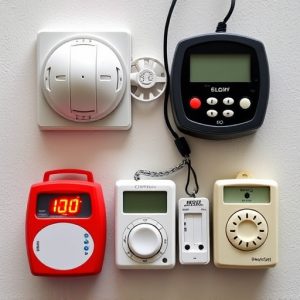Emergency Phone Alerts with Location Sharing: Enhancing Safety with Personal Alarms
Modern emergency phone alerts with location sharing, powered by advanced technology, are essential f…….
Modern emergency phone alerts with location sharing, powered by advanced technology, are essential for saving lives. These alerts notify users and share their exact location with emergency services using a unique Personal Alarm Sound designed to penetrate walls and obstacles, ensuring swift responder action even in poorly signaled areas. This system enhances response efficiency, providing real-time locations to first responders and significantly reducing response times, particularly crucial during domestic emergencies or when traditional communication methods are compromised. The effectiveness of these alerts relies on sound penetration science, with the Personal Alarm Sound piercing noise pollution and reaching recipients promptly, even indoors.
In today’s digital era, emergency phone alerts with location sharing have emerged as a powerful tool for enhancing safety. This article delves into the crucial role of these alerts in saving lives by exploring key aspects: understanding their functionality, the benefits of location sharing, the science behind sound penetration through walls, and the implementation of personal alarm systems for efficient emergency response. Discover how these elements combine to create a robust safety net.
- Understanding Emergency Phone Alerts: A Lifesaving Tool
- How Location Sharing Enhances Safety Features
- The Science Behind Sound Penetration and Wall Barrier Penetration
- Implementing Personal Alarm Systems for Effective Emergency Response
Understanding Emergency Phone Alerts: A Lifesaving Tool
Emergency phone alerts with location sharing are a powerful tool that can save lives and provide crucial information during critical situations. These alerts, often triggered by specific events or conditions, use a combination of technology to notify users and share their exact location with emergency services. When an individual finds themselves in danger or requires immediate assistance, a simple press of a button activates a unique personal alarm sound, piercing through walls and obstacles to ensure maximum penetration.
This innovative system allows for swift action by emergency responders, who can quickly pinpoint the user’s location, even if they are inside buildings or areas with poor signal reception. By leveraging modern technology, these alerts offer peace of mind, empowering individuals to take proactive measures during emergencies while enabling efficient response times from critical services.
How Location Sharing Enhances Safety Features
Location sharing is a game-changer in enhancing emergency phone alerts, especially in situations where every second counts. When activated during an emergency, this feature allows first responders to instantly pinpoint the exact location of the caller, even if they are unable to speak due to shock or injury. This real-time data can significantly improve response times, as emergency services can navigate directly to the scene without any delays caused by incorrect or vague directions.
Moreover, location sharing goes beyond just mapping out an address. It also helps in situations where traditional communication methods might be compromised. For instance, if a person triggers their Personal Alarm Sound—a unique signal designed to penetrate walls and other barriers—their location is automatically shared with pre-selected contacts or emergency services. This feature ensures that help arrives swiftly, especially in cases of domestic emergencies or when someone is trapped in a confined space.
The Science Behind Sound Penetration and Wall Barrier Penetration
The effectiveness of emergency phone alerts with location sharing depends heavily on the science behind sound penetration and wall barrier penetration. When a personal alarm is activated, a high-decibel sound signal is emitted, designed to pierce through noise pollution and capture attention quickly. This sound wave travels at different speeds depending on the medium; in air, it moves swiftly, but when encountering solid objects like walls, its path changes.
Walls, especially concrete or brick structures, pose a significant barrier to sound waves due to their mass and density. Yet, sound can still penetrate these barriers, albeit with varying degrees of attenuation. The thickness and material composition of the wall play crucial roles in determining how much of the alarm’s frequency spectrum remains intact after transmission through the wall. Understanding this phenomenon is essential for ensuring that emergency alerts reach recipients promptly, especially when they are indoors or in enclosed spaces.
Implementing Personal Alarm Systems for Effective Emergency Response
In today’s digital era, emergency phone alerts with location sharing have become a powerful tool for ensuring swift and effective response during critical situations. However, to complement these technological advancements, implementing personal alarm systems can significantly enhance individual safety. These alarms, designed to emit a distinct Personal Alarm Sound, are crafted to penetrate walls and reach neighbors or emergency services promptly. This two-pronged approach – leveraging technology for alerts and utilizing dedicated devices for immediate notifications – creates a robust network of support during emergencies.
By integrating personal alarm systems with location sharing features, individuals can ensure that help is on the way faster. The loud, piercing sound serves as a signal to both the person in distress and nearby residents, encouraging quick action. Moreover, this combination offers an extra layer of security, especially for those living alone or in remote areas where response times might be longer. This proactive measure empowers individuals to take control of their safety and fosters a sense of community preparedness.
Emergency phone alerts with location sharing are a powerful combination that significantly enhances personal safety. By understanding how these features work, from the science behind sound penetration and wall barrier penetration to implementing personal alarm systems, we can create a more responsive and effective emergency response ecosystem. These tools ensure that help arrives swiftly, potentially saving lives and minimizing damage in critical situations.

